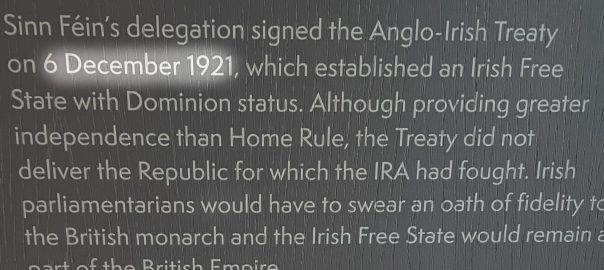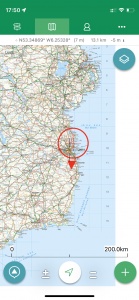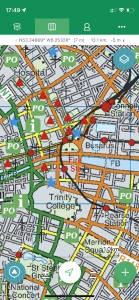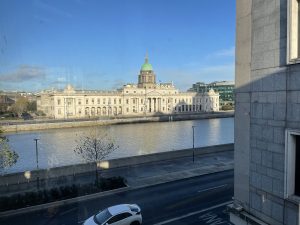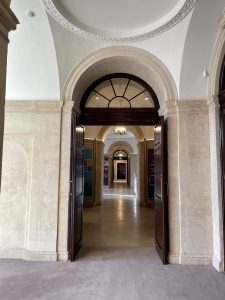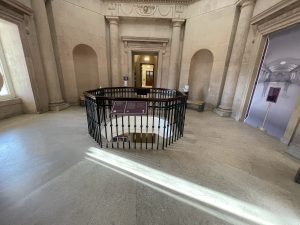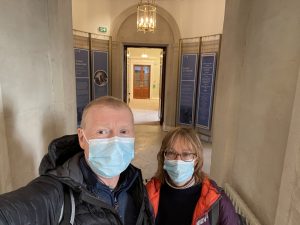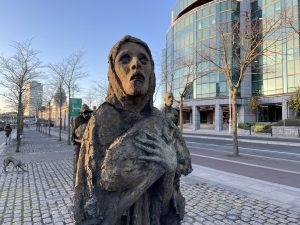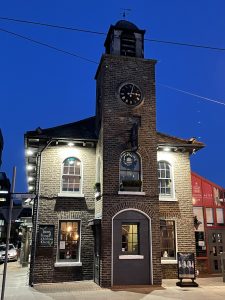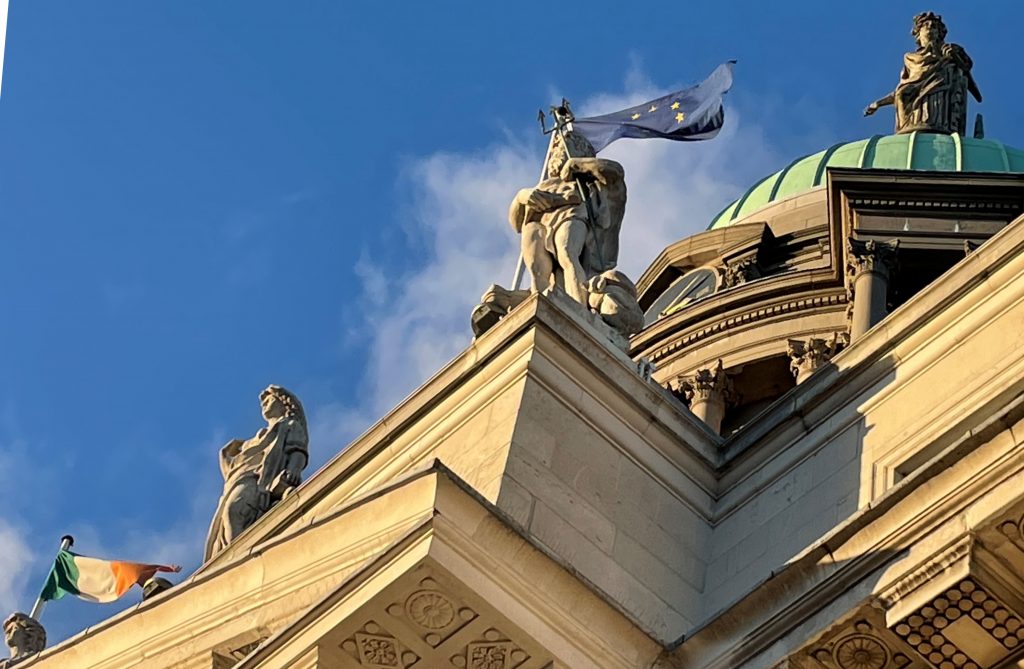Ireland day 0069. Monday 06 December 2021- Treaty
Commentary
Another spoiler alert – this started out as a short blog describing a quick visit to a museum, but I realised has ballooned into a treatise on modern Irish history. But I quite enjoyed writing it, as it helped me to understand a bit better the chronology of Ireland’s turbulent birth. You might be interested to read it, but if not just skip to the bottom and look at the pictures.
I’d like claim to that careful thought went into the choice of today – 6 December 2021 – for our visit the Custom House museum, with all the history which inextricably links it to the birth of Ireland. But the truth is, I was (almost) as ignorant of the significance of today’s date as anyone else. In fact given the lack of coverage in the media over here, I suspect quite a few locals are equally unaware and it wasn’t until we got to the museum today and was chatting to one of the guides that I realised quite how important today was.
But we are getting ahead of ourselves. This morning, it was bright and clear so we decided to do our exploring today, rather than tomorrow, when we are told by an over-excitable press that Storm Barra is going to wreak havoc and destruction far and wide. We started the morning trying to wind ourselves up to the task of writing Christmas cards, but sadly didn’t get very far. But by the time we had decided we really didn’t have the appetite for it, and because it was bright and sunny outside, we downed pens and headed over to the station to catch the DART into town.
The Custom House is only a short hop over the river from Tara St station, which itself is on a direct line from Malahide. So we were there in next-to-no-time, and ready to inspect one of Ireland’s newest visitor attractions. In fact it only opened 3 weeks ago, and is run by the ever-excellent OPW – so it’s also free to go in for the remainder of this year. The museum only occupies the front part of the magnificent Custom House on the north shore of the Liffey – the other 90% is a working office, occupied by a number of Government departments.
About half of the museum is dedicated to the construction and early uses of the custom house, but the other half explains its role in contemporary Irish politics through the 20th century. It’s had a fascinating past, being built in 1791 to the design of architect James Gandon. Even its construction was controversial as local businessmen objected and went as far as bribing locals with beer and gingerbread to protest against it. Unfortunately the plan backfired when the erstwhile protestors enjoyed the hospitality too much and rather than protesting, stripped off and started swimming in the fountains.
The building’s heyday was short lived however because the Acts of Union just a decade after its inception stripped Dublin of its power and wealth and slowly the axis of commerce tilted north to Belfast. By the early 20th century, it had been commandeered by the British government and various local government offices were housed there. It became the focal point for the nationalist cause as “one of the seats of an alien tyranny”.
In 1913 Dublin was crippled and impoverished by the brutal lockouts over trades union recognition, and was then dragged immediately into the first world war, fighting as part of the United Kingdom. Nationalists saw London’s distraction with the war as an opportunity to strike out against rule by London and this led to the Easter uprising in 1916. The chosen target for the uprising was the Dublin G.P.O. The Custom House had also been considered as an alternative target but escaped. The uprising was brutally quashed and many of its perpetrators were summarily tried and executed, which further stoked nationalist sentiment – which to that point had actually been rather low key.
Anti-British feelings were compounded after the war when the Local Government Board (located in the Customs House) was seen to have mismanaged the flu pandemic which led to the death of about 1% of Ireland’s population. 21st century Governments take note. At about the same time – December 1918 – the United Kingdom (which at that time of course included the whole of Ireland) held a general election and 73 of the 104 Irish seats were won by Sinn Fein – representing the Nationalists. Many of those elected – including Eamon de Valera – were unable to take their seats as they were in prison (for their parts in the Easter 1916 uprising) at the time.
On the back of their big majority, the nationalist Irish MPs rebelled and refused to go to London but instead formed a rival parliament – Dáil Éirann – in Dublin. On the day that the first Dáil sat in January 1919, a minor skirmish in Tipperary elicited an armed intervention by British Crown Forces. This rapidly escalated into an all out War of Independence, between the Irish Republican Army and British Crown Forces. The Dáil tried in vain to retain control but the country descended into a state of near anarchy.
While this War of Independence was going on, in 1920 London passed the Government of Ireland act. This partitioned Ireland into the northern (mainly protestant – partly a relic of the 17th century Plantations) six counties and the southern (mainly catholic) twenty six. Each was supposed to have its own devolved government, but both still remaining in the United Kingdom and a Council of Ireland overseeing both. This came into force in 1921 but the War was still going on, with nationalist forces wanting full independence for the whole of Ireland and Britain only prepared to offer the devolved governments.
Nationalist forces felt they needed to up the pressure on London and an attack on the Custom House was planned. This duly happened on 25 May 1921 when nationalist forces stormed the building and set it on fire – destroying most of its contents and a lot of its structure. After this watershed event the Dáil intervened and peace talks with Lloyd George in London were initiated. In the end, both sides were keen to end the violence and compromised. Michael Collins, the leader of the attack on the Custom House, led the Irish negotiating team and signed the Anglo Irish Treaty, which led to the creation of the Irish Free State.
The treaty was signed on 6 December 1921 – precisely one hundred years to the day before we visited.
The Irish free state had almost complete autonomy from Britain but remained part of the Empire. It initially covered all 32 counties but the northern six had a month after the Treaty was signed to opt out, which they did. So the Free State comprised the southern 26 counties, while the northern six continued down the originally envisaged path of semi-autonomous government within the UK. So from that moment the north was detached from the south, and the two entities evolved in separate directions.
Leaders of the Free State had to swear an oath of fidelity to the British monarch which was a step too far for the nationalist movement. So in early 1922, Ireland was plunged into another war – this time a Civil War between the nationalist forces led by de Valera and in the form of the IRA, and the pro-Treaty Government forces led by Michael Collins. In the end, by December 1922 the nationalists were defeated and the Free State prevailed, but along the way Collins was murdered after being ambushed in Cork.
An uneasy peace ensured, and Ireland did not gain full independence until 1949. Ironically, at this point without fuss, ceremony or war, it simply declared independence, seceded from the commonwealth, and became a Republic. At the time of secession, Republics could not become part of the Commonwealth and even though the rule was changed just days later, Ireland never chose to apply to join. The bitterness of partition lingers to this day, though, most recently manifested in the Troubles and not really helped by the recent Brexit referendum. Although it is said that time heals, the tensions have been there for centuries and to the outside observer it still seems as if there is a lot of water left to flow under a lot of bridges before Ireland is finally completely at ease with itself.
Phew! and all that just came from one simple quick visit to a museum! Hopefully for all our sakes, tomorrow will be a bit less interesting!
Today’s photos (click to enlarge)
